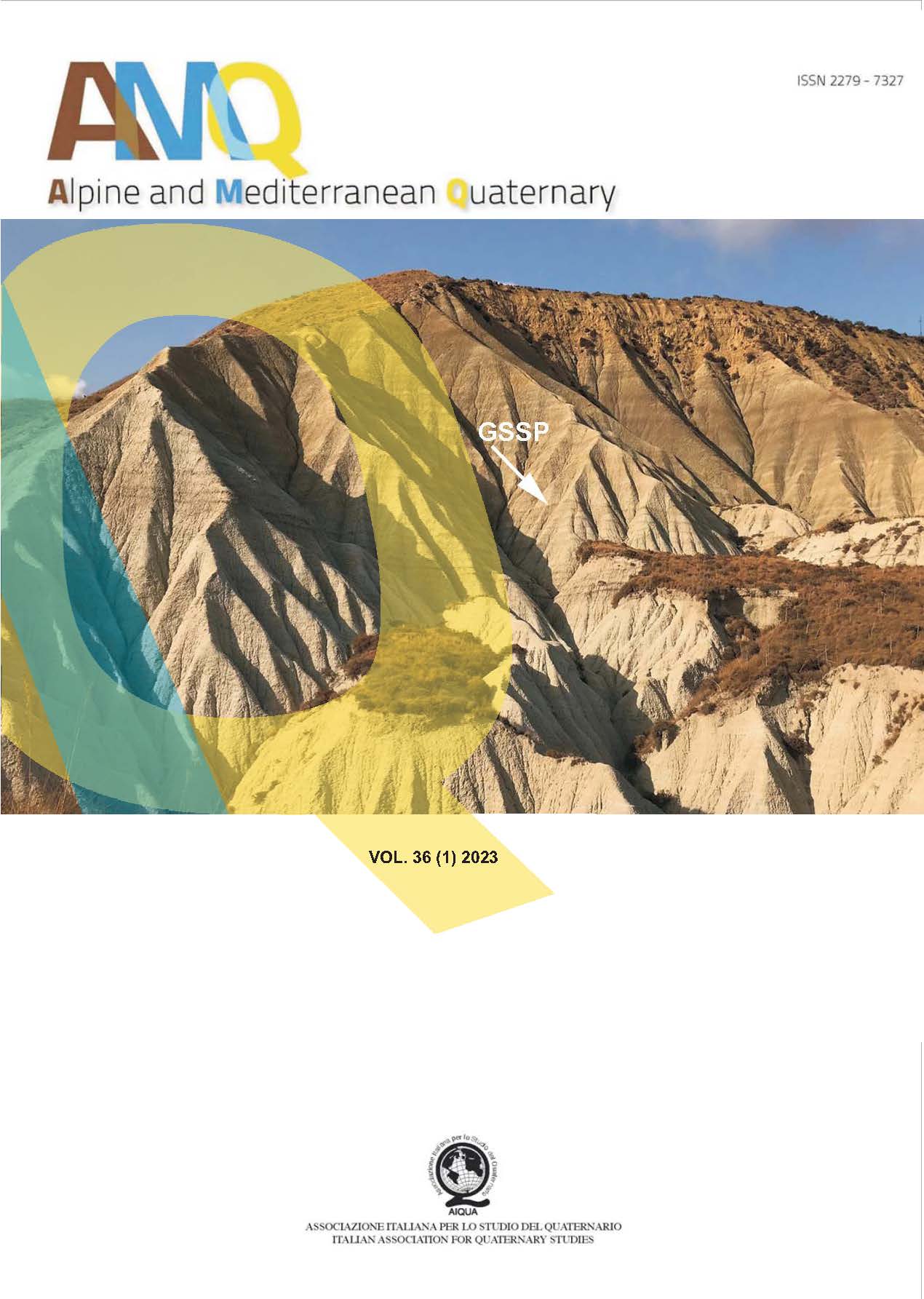Piacenzian to late Pleistocene flora and vegetation in Italy: a moving sketch
Main Article Content
Abstract
Late Neogene and Quaternary stratigraphical records are highly useful for the palaeoenvironmental and palaeoclimatic reconstructions of the Mediterranean area, this also relies on the great wealth of available Italian marine and continental sedimentary successions. 63 Italian pollen sites over the 3.60-0.0117 Ma interval have been selected with a total of 35 terrestrial and 28 marine sites. Pollen evidence documents the main changes in both flora composition and vegetation structure, tracing the imprint of increasing cooler climates on Italian vegetation since the latest Pliocene. The role of both altitudinal gradients and physiographic reorganizations as well as of major taxa replacements and extinctions-time is illustrated by the use of well calibrated pollen records. The flora and vegetation response to glacial/interglacial cycles is especially well expressed from the beginning of the Pleistocene, and across the Early Middle Pleistocene climate transition when a major decrease in temperature, during both glacial and interglacial phases, occurred. Alternations of Artemisia steppe and thermophilous forest illustrates the overall glacial–interglacial (G/I) vegetation changes. However, different patterns of the G/I vegetational cycle were detected in both northern and southern pollen sites. The Late Pleistocene high-resolution pollen records document the vegetation response to rapid climate changes such as the Dangaard-Oeschger “cycles” and Heinrich stadials, associate to millennial to sub-millennial events.
Article Details
Issue
Section

This work is licensed under a Creative Commons Attribution-NonCommercial-NoDerivatives 4.0 International License.
The Author grants usage rights to others using an open license (Creative Commons or equivalent) allowing for immediate free access to the work and permitting any user to read, download, copy, distribute, print, search, or link to the full texts of articles, crawl them for indexing, pass them as data to software, or use them for any other lawful purpose.

